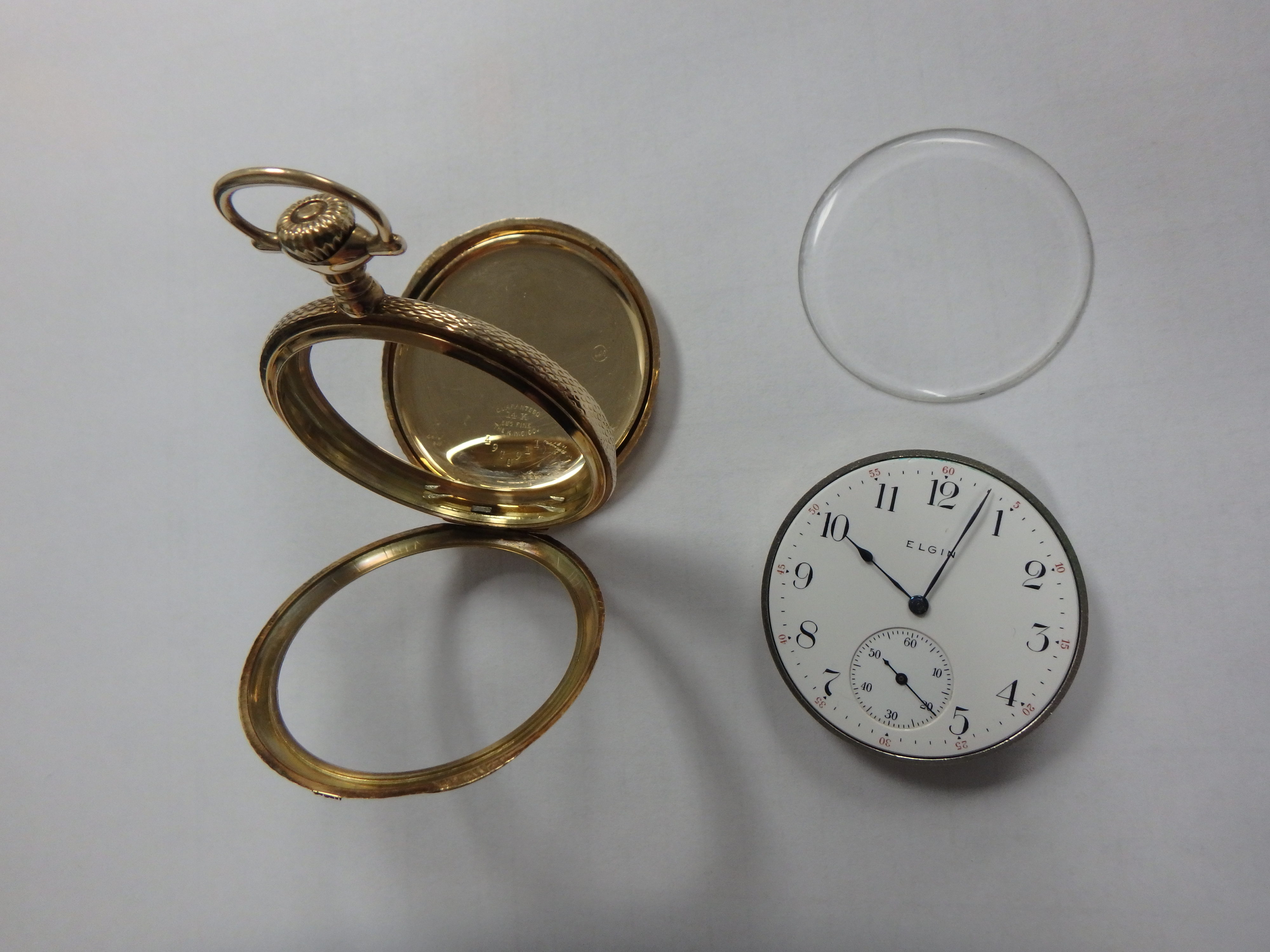Gold Watches Part 2
How Gold Watches Are Built

How Much Gold is in a Gold Watch
To be effective at buying gold watches, it is very important to know what is the ballpark amount of gold in a particular gold watch prior to taking it apart. In the ideal of worlds, customers would bring just the watch’s gold carcass, with all the non-gold parts removed. That way the gold part of the watch is purchased just as gold scrap. However, most often, customers want to know how much they will get for the watch prior to taking it apart. Or, as it is very common, the gold buying transaction will be much more quickly expedited by just paying for the gold watch soon and dealing with taking it apart later.
The best way to be effective at buying gold watches is to know as much as possible about them. With that understanding, and a comparative method for calculating the approximate non-gold mass, realistic estimates of gold mass are possible.
Types of Gold Watches
There are two types of gold watches
- Gold pocket watches
- Gold wrist watches
Gold Pocket Watches
Back in the late 1800s to the early 1900s, pocket watches, together with fountain pens, where the equivalent of owning a cell phone and a laptop. Before that time, for someone to know the time of the day, they had to look at the closest clock tower. With the pocket watch they could know the time immediately. With the fountain pen, they could quickly write notes and send correspondence. That was a huge technological leap forward. To this day, clock towers are still prominent in the older government and public buildings of most cities. Thus, knowing the exact time without having to get close enough to the closest clock tower to see it was very liberating. A good pocket watch was indeed a very important tool.
Especially with the arrival of railroad service, precision timekeeping became very important. The efficient use of the railroad depended on precise timepieces. Thus the “railroad pocket watch” became a very important tool. In fact, another “railroad watch” is another name for “pocket watch”.
Pocket watches are not small items by today standards but were considered such in their days. They were the result of much more advanced engineering and manufacturing than before, and state of the art in miniaturization. Thus, pocket watches became jewelry too. The higher the status of the individual, the better and nicer the watch that person would carry. At the low end of the social spectrum, people would carry silver plated watches. Above that, gold plated watches, then solid gold 14K or 18K watches.
In reality “gold watches” are not really gold. They are a timekeeping mechanism inside a gold-bearing alloy housing. The mechanism is mostly made of brass and steel parts. The housing is made of a gold alloy, which is most often 14K fine gold because of its durability, but also 18K. From the point of view of a gold buyer such as me, that gold housing is called the “gold carcass”, and that is the part gold buyers are interested in.
In addition to the mechanism, technically called “the movement”, gold pocket watches have all other non-gold parts. The main ones are the lens(es), steel springs, often brass framing, steel knob stems, etc. Thus, the gold mass of the carcass of pocket watches seems a lot heavier than it actually is.
All gold pocket watches were nice. It is just that the higher end the gold pocket watch, the more gold it has. Most common pocket gold watches have thin shells that can easily be dented. In addition, to hold the thin metal components together, brass structural elements are present. The higher end gold pocket watches are most often larger, have thicker gold, fewer brass structural components, most often gold lens protectors. Some are even thick enough for deep machined ornamental patterns. Thus, higher end gold pocket watches have much heavier gold carcasses.
Most gold pocket watches have the gold fineness hallmark on the inside of the movement cap. That cap can easily be opened with a knife blade, and even often with a finger nail. When considering buying a gold pocket watch, first open the movement cap. Most likely there will be a hallmark indicating “14K”, “18K” or similar. If no such hallmark is visible, there is a super high chance that the pocket watch carcass is not solid gold, just gold plated.


![[Most Recent Quotes from www.kitco.com]](http://www.kitconet.com/charts/metals/gold/t24_au_en_usoz_2.gif)
![[Most Recent Quotes from www.kitco.com]](http://www.kitconet.com/charts/metals/silver/t24_ag_en_usoz_2.gif)
![[Most Recent Quotes from www.kitco.com]](http://www.kitconet.com/charts/metals/platinum/t24_pt_en_usoz_2.gif)










